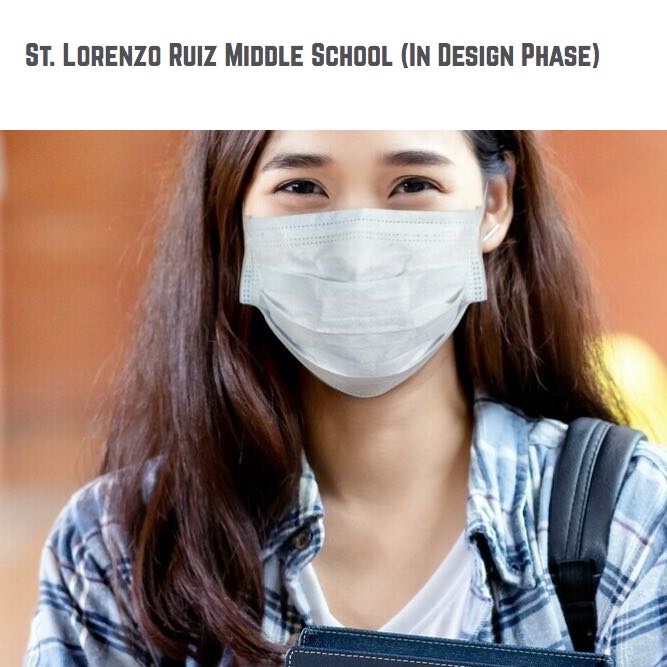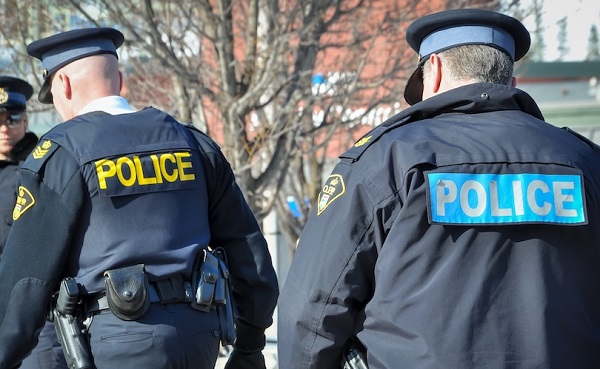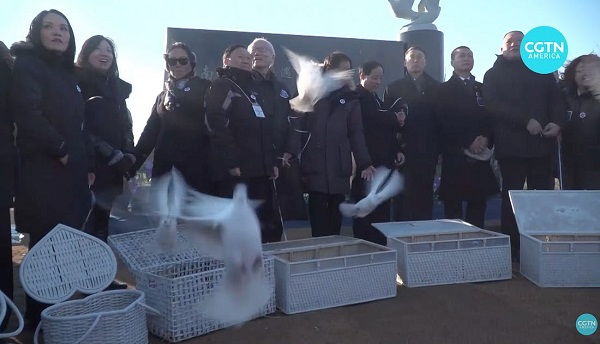Education
Kentwood and area residents invited to hear details about new 700 student Catholic Middle School

From Red Deer Catholic Regional Schools
RDCRS connects with residents in the Kentwood neighbourhood about St. Lorenzo Ruiz Middle School
Red Deer Catholic Regional Schools has been provided funding for the construction of a new middle school in The City of Red Deer. St. Lorenzo Ruiz Middle School will be located in the neighbourhood of Kentwood. The location of the new school was selected to support current and future student populations in the community.
“The Division’s middle schools in Red Deer are currently operating at over 120 per cent capacity and we expect continued enrolment growth,” said Board Chair, Kim Pasula at Red Deer Catholic Regional Schools.
“Families and young people in our region continue to choose Catholic education. Over the last 10 years, enrolment in our Division has increased by 50 per cent and today well over 10,000 children are attending our schools.”
Work has begun on the design of the school, with preliminary geotechnical testing completed in early 2021 to understand site conditions.
“The new St. Lorenzo Ruiz Middle School will bring a $25 million infrastructure project to our community. The new school will help to alleviate the overcrowding in our existing schools and create new educational and amenity opportunities for the young people and families that live in the surrounding neighborhoods. We look forward to sharing more about the project and hearing from community members at the upcoming online meeting, the first in a series of planned engagement sessions,” says Pasula.
To keep residents informed on the progress, the Division is holding a community engagement session on Tuesday, April 6 at 5:00 p.m. Due to COVID-19 restrictions, this meeting will be held virtually via Zoom. The intent of this engagement session is to provide a forum for community feedback and an opportunity to voice concerns with the overall design of the school. This first engagement session will focus primarily on the site layout.
Dear Kentwood residents,
As you may be aware, Red Deer Catholic Regional Schools has been provided funding for the construction of a new middle school in the City of Red Deer. The school site in your community has been chosen for the location of the new school, St. Lorenzo Ruiz Middle School. The location of the new school was selected to support current and future student populations in the community
Interested attendees can join the Zoom meeting link (Meeting ID: 950 5484 1129 and Passcode: i2RDy0).
St. Lorenzo Ruiz Middle School features:
● The school will be a two-storey design to accommodate 700 middle school students.
● The school is planned to follow a traditional school year and will operate as a closed
campus.
● The school site will provide parking lots to staff and visitors, with a potential student
drop-off lane within the visitor parking lot.
● The current playground and skating rink will be retained on-site, and the retention pond
will not be altered.
● Additional playground space is intended to be installed, including a proposed basketball
pad.
● Red Deer Catholic Regional Schools will provide an opportunity for user groups to rent the
facility after-hours and on weekends.
● Construction is expected to start late fall of 2021, with the school opening September
2023.
For more information, please visit https://www.stlorenzoschool.ca/.
Alberta
Schools should go back to basics to mitigate effects of AI

From the Fraser Institute
Odds are, you can’t tell whether this sentence was written by AI. Schools across Canada face the same problem. And happily, some are finding simple solutions.
Manitoba’s Division Scolaire Franco-Manitobaine recently issued new guidelines for teachers, to only assign optional homework and reading in grades Kindergarten to six, and limit homework in grades seven to 12. The reason? The proliferation of generative artificial intelligence (AI) chatbots such as ChatGPT make it very difficult for teachers, juggling a heavy workload, to discern genuine student work from AI-generated text. In fact, according to Division superintendent Alain Laberge, “Most of the [after-school assignment] submissions, we find, are coming from AI, to be quite honest.”
This problem isn’t limited to Manitoba, of course.
Two provincial doors down, in Alberta, new data analysis revealed that high school report card grades are rising while scores on provincewide assessments are not—particularly since 2022, the year ChatGPT was released. Report cards account for take-home work, while standardized tests are written in person, in the presence of teaching staff.
Specifically, from 2016 to 2019, the average standardized test score in Alberta across a range of subjects was 64 while the report card grade was 73.3—or 9.3 percentage points higher). From 2022 and 2024, the gap increased to 12.5 percentage points. (Data for 2020 and 2021 are unavailable due to COVID school closures.)
In lieu of take-home work, the Division Scolaire Franco-Manitobaine recommends nightly reading for students, which is a great idea. Having students read nightly doesn’t cost schools a dime but it’s strongly associated with improving academic outcomes.
According to a Programme for International Student Assessment (PISA) analysis of 174,000 student scores across 32 countries, the connection between daily reading and literacy was “moderately strong and meaningful,” and reading engagement affects reading achievement more than the socioeconomic status, gender or family structure of students.
All of this points to an undeniable shift in education—that is, teachers are losing a once-valuable tool (homework) and shifting more work back into the classroom. And while new technologies will continue to change the education landscape in heretofore unknown ways, one time-tested winning strategy is to go back to basics.
And some of “the basics” have slipped rapidly away. Some college students in elite universities arrive on campus never having read an entire book. Many university professors bemoan the newfound inability of students to write essays or deconstruct basic story components. Canada’s average PISA scores—a test of 15-year-olds in math, reading and science—have plummeted. In math, student test scores have dropped 35 points—the PISA equivalent of nearly two years of lost learning—in the last two decades. In reading, students have fallen about one year behind while science scores dropped moderately.
The decline in Canadian student achievement predates the widespread access of generative AI, but AI complicates the problem. Again, the solution needn’t be costly or complicated. There’s a reason why many tech CEOs famously send their children to screen-free schools. If technology is too tempting, in or outside of class, students should write with a pencil and paper. If ChatGPT is too hard to detect (and we know it is, because even AI often can’t accurately detect AI), in-class essays and assignments make sense.
And crucially, standardized tests provide the most reliable equitable measure of student progress, and if properly monitored, they’re AI-proof. Yet standardized testing is on the wane in Canada, thanks to long-standing attacks from teacher unions and other opponents, and despite broad support from parents. Now more than ever, parents and educators require reliable data to access the ability of students. Standardized testing varies widely among the provinces, but parents in every province should demand a strong standardized testing regime.
AI may be here to stay and it may play a large role in the future of education. But if schools deprive students of the ability to read books, structure clear sentences, correspond organically with other humans and complete their own work, they will do students no favours. The best way to ensure kids are “future ready”—to borrow a phrase oft-used to justify seesawing educational tech trends—is to school them in the basics.
Business
Why Does Canada “Lead” the World in Funding Racist Indoctrination?
-

 Business2 days ago
Business2 days agoOttawa Pretends To Pivot But Keeps Spending Like Trudeau
-

 Agriculture19 hours ago
Agriculture19 hours agoWhy is Canada paying for dairy ‘losses’ during a boom?
-

 Automotive1 day ago
Automotive1 day agoFord’s EV Fiasco Fallout Hits Hard
-

 Censorship Industrial Complex2 days ago
Censorship Industrial Complex2 days agoHow Wikipedia Got Captured: Leftist Editors & Foreign Influence On Internet’s Biggest Source of Info
-

 Crime2 days ago
Crime2 days agoThe Uncomfortable Demographics of Islamist Bloodshed—and Why “Islamophobia” Deflection Increases the Threat
-

 Alberta20 hours ago
Alberta20 hours agoAlberta’s new diagnostic policy appears to meet standard for Canada Health Act compliance
-

 Censorship Industrial Complex21 hours ago
Censorship Industrial Complex21 hours agoTop constitutional lawyer warns against Liberal bills that could turn Canada into ‘police state’
-

 espionage2 days ago
espionage2 days agoCarney Floor Crossing Raises Counterintelligence Questions aimed at China, Former Senior Mountie Argues












